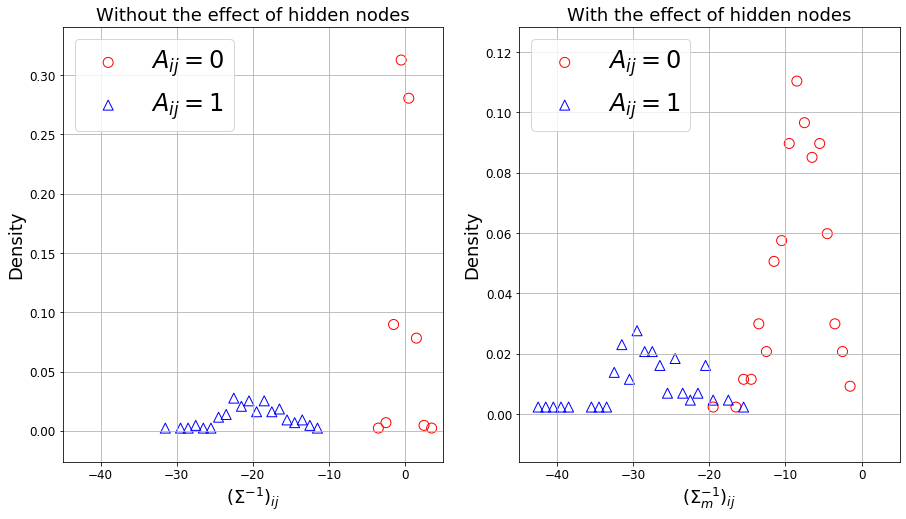Effect of hidden nodes on the reconstruction of bidirectional networks
Emily S. C Ching, P. H. Tam, “Effects of hidden nodes on the reconstruction of bidirectional networks“, Phys. Rev. E 98, 062318 (2018)
To demonstrate the method used in this journal publication using Python.
pip -r install requirements.txt
Demo.ipynb
Jupyter notebook to demonstrate network reconstruction
utils
A package with general tools for computations
gen_net
A package to generate weighted adjacency matrix from a network model
gen_cov
A package to generate covariance matrix from a dynamical system given the weighted adjacency matrix
choose_nodes
A package to select nodes as measured nodes and hidden nodes
reconstruct
A package to reconstruct adjacency matrix from a reconstruction method given the data
evaluate
A package to evaluate the reconstruction performance
plots
A package to plot figures

The above figure shows one of the nodal dynamics. It fluctuates around a stable fixed point (red dotted line). The time series is sampled after the green dotted line for covariance computation. This network consists of 100 nodes in total.

Left: Without effect of hidden node. A bimodal distribution is observed with unconnected data points around zero.
Right: With effect of hidden node. A bimodal distribution is still observed even if there are 70 out of 100 nodes are hidden nodes. What is remarkable is that when you compare with the Left figure, it is as if the whole distribution is shifted to the left by roughly the same amount without distorting the bimodal feature.
Notice that we are using inverse covariance matrix not the covariance matrix itself to reconstruct the network connectivity. See also Reconstructing weighted networks from dynamics and Reconstructing networks from dynamics with correlated noise
@article{PhysRevE.98.062318,title = {Effects of hidden nodes on the reconstruction of bidirectional networks},author = {Ching, Emily S. C. and Tam, P. H.},journal = {Phys. Rev. E},volume = {98},issue = {6},pages = {062318},numpages = {9},year = {2018},month = {Dec},publisher = {American Physical Society},doi = {10.1103/PhysRevE.98.062318},url = {https://link.aps.org/doi/10.1103/PhysRevE.98.062318}}